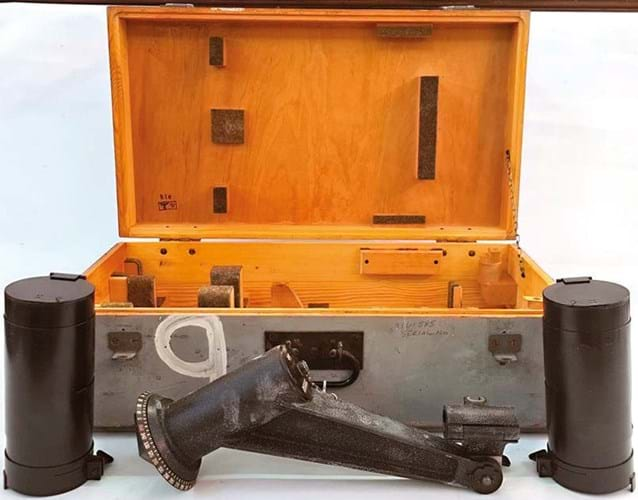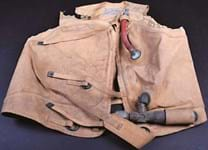Sir Peter Scott, founder of the Wildfowl and Wetlands Trust at Slimbridge, Gloucestershire, in November 1946, had a decent idea of how to find them.
Scott (1909-89) – son of Scott of the Antarctic – served on HMS Broke during the Second World War, rising to the rank of commander before he was discharged from his naval duties.
He must have possessed a fine knowledge of naval and aircraft optics and had the opportunity to purchase both German and Japanese examples.
Instruments acquired by Scott either during or just after the war in order to carry out wetland bird surveys in and around the Cotswolds came for sale at the Cotswold Auction Company (22% buyer’s premium) on February 9. The consignor was the trust, which had been sorting out storerooms.
Auction house director Lindsey Braune said: “Bidders were particularly interested in the U-Boat binocular transit boxes because of the remaining fittings (for example glare guards or rain tubes and the mounting), despite the fact that none of them actually contained binoculars. Apparently, they are very rarely found with fittings.”
Top-seller was an example with glare guards (no 332893) by Carl Zeiss in a grey-painted box marked D.F.8X60 mit Stativaufsatz, which sold to a collector via thesaleroom.com for £4400 against an estimate of £1500-2000.
An online bidder also bought a pair of naval ship-mounted binoculars/sights catalogued as ‘marked with plaque to top with indistinct writing, but appears to be German, probably by Schneider KQC 25 x 105 anti-aircraft binocular (with damage)’.
They sold for £1350 (estimate £300-500).

Carl Zeiss naval mounting ship binoculars, in grey painted pine case – £950 at Cotswold Auction Company.
A large pair of Carl Zeiss naval mounting ship binoculars, no 218214, in grey painted pine case, went to a London trade bidder for £950 (estimate £200-300).
Geese counting
In the 1950s Slimbridge led the world in undertaking wetland bird surveys. Scott worked out that the best way to count shelduck and barnacle geese was from the air using wing-mounted cameras developed in the war for surveillance work.
A set of two US Airforce Fairchild K-20 aircraft camera cases in boxes went for £240.
Braune added: “We had a huge amount of interest from collectors ranging from the Caribbean and US to Belgium, and other international as well as the UK. Seven phone lines were manned and there was active bidding from all of them.”
















